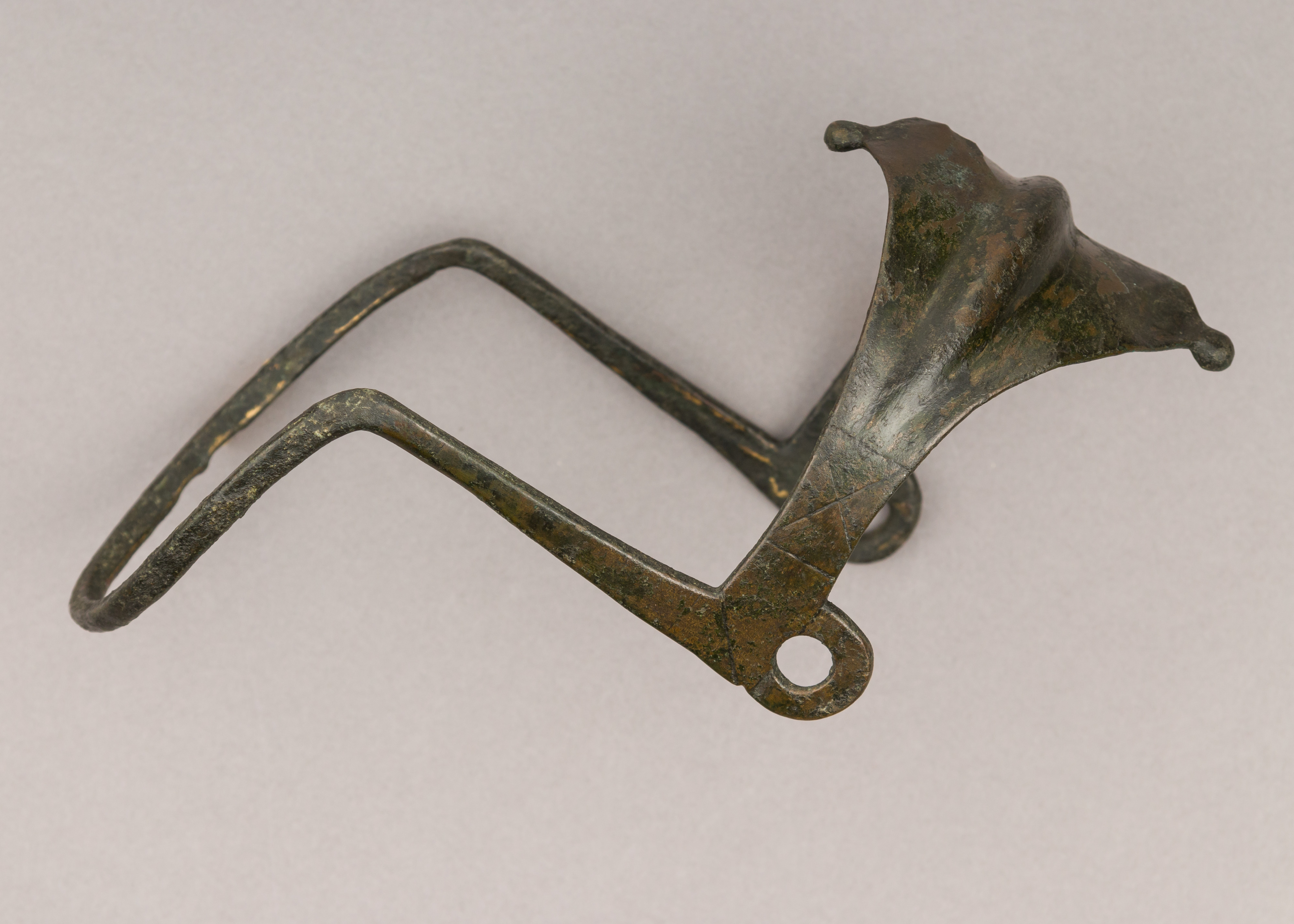Cavesson (Psálion)
This ancient type of cavesson was used with a curb bit as a kind of 'emergency break.' Its lower curved bar was connected to a lead rope attached to the saddle or wrapped around the rider's arm. The cavesson presses on the horse's nose, a very sensitive area, and is used for reprimanding a spirited horse, or simply keeping some control of it, when the rider has to let the reins go for fighting. It was also used for leading a horse on foot. On this example, the long angled shanks have a leverage effect increasing the strength of the rider's action on the nose (like today's hackamores).
The use of the cavesson (psálion in Greek) was widely known in the Ancient Near East and Greece, and is described in the equestrian treaty of Xenophon (ca. 430–355 B.C.). There he also indicates not to lead the horse with one rein, because the bit, pulled in a wrong way, would spoil the mouth, and advises to use the cavesson instead.
These cavessons are often found in western Europe, up to Hadrian’s wall, because of the presence of Eastern cavalrymen, particularly Thracians, in the Roman army (Thracians were considered the best cavalrymen of the Ancient world).
Due to rights restrictions, this image cannot be enlarged, viewed at full screen, or downloaded.
This artwork is meant to be viewed from right to left. Scroll left to view more.





